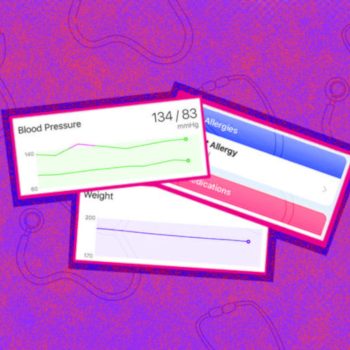
Data Context Is an Important Catalyst for Healthcare IoT
Most people are aware of consumer health and fitness wearables, such as the Fitbit, but many don’t know about the existence of medical-grade devices until they have to use one. Historically, there has been a significant divide between the two (consumer and medical-grade devices) as a result of data quality and context: data that is good for lifestyle improvements vs. data that meets medical standards and aids medical use cases.
The divide between consumer and medical devices is quickly being bridged as technology evolves to offer advanced sensors and form factors that lead to the creation of a wearable that combines the best of both worlds. We’re generating more and more high-quality data to feed our insight-producing algorithms, which not only deliver the personalized results so often discussed in the industry but, more importantly, the ability to preempt medical crises.
One example of the potential for consumer healthcare devices is the aforementioned Fitbit’s recent application in clinical trials. Fitbit is said to be used in 500 or so clinical trials currently, including trials for congestive heart failure where a continuous picture of activity is relevant to the provider. We’ve even seen its use in pharmaceutical clinical trials for neurodegenerative disorders, where the ability to remotely track motion shows how the drug impacts a patient’s day-to-day, instead of only gathering this data from patient diaries. Additionally, we’re seeing other major consumer technology companies move deeper into the device space. For instance, Apple, with its latest upgrade to the Apple Watch, allows for medical-grade EKG monitoring directly to consumers. It’s even viable for a doctor to use as a supplement in treatment and diagnosis.
These healthcare data points have to be considered in context. The accuracy and quality of data from consumer wearables are wide-ranging, and thus their use needs careful scrutiny when it comes to medical applications.
In the world of remote patient monitoring (RPM) and the Internet of Healthcare Things (IoHT)—where devices remotely and continuously gather meaningful data on the state of our health before, during and after a health event, there are three main considerations for context, described below.
1. Do We Have Enough Healthcare Data to Power Precise Applications?
The overall idea of IoHT applications is the opportunity to gather enough data to get a reliable and overarching picture of a patient’s true health state in order to personalize their healthcare, rather than generalize. However, in the grand scheme of things, it’ll not only depend on an individual’s data but on collective healthcare data from the population. Wearables are the catalyst making this vision a reality. They provide the opportunity to collect data outside the clinical setting on a mass scale. As form factor and accuracy improve, adoption will grow and a plethora of healthcare data will become available—data that can then be targeted to the individual.
2. Is the Volume Controlled?
While it may sound counter-intuitive, having too much healthcare data can be as detrimental as not having enough healthcare data. Too much data can be overwhelmingly useless, resulting in a healthcare system’s inability to make use of the data simply due to available time and resources. The cost and time required to execute machine learning and other algorithms in order to find value in the data are inversely proportional to the volume. Devices might have continuous temperature monitoring in order to take readings every second. But do all applications need data at that rate, and what is the cost of storing and processing the data at that volume? Well, it depends on the application. Devices should have the ability to allow an application to filter and control the data volume in order to make the best use of it. While data volume is incredibly important, it’s just as important to focus on relevancy and quality, ensuring it’s manageable for all healthcare applications.
3. How Does Context Affect Healthcare Data?
While healthcare data context might seem like the forgotten stepsister when it comes to seeing the value in big data delivered by wearable devices, application solution providers have to remember to ask themselves an important question: what issue are we really trying to address with this solution? It forces developers to consider the environmental factors that impact the data. For many ailments, patients can be directly or indirectly impacted by things like the weather, or even the state of the news cycle, resulting in stress that may or may not be stressful for another patient with the same ailment. With the right context, we can determine whether a person’s condition is truly an internal disease or environmentally created, and thus prescribe the least invasive or most preventive treatment for the condition.
With the IoT analytics market expected to reach $60 billion by 2025, healthcare will account for 70 percent of that market. This includes medical-grade devices that utilize new and existing sensors, which will greatly impact how we interact with healthcare providers and receive care. But first, we need to focus on ensuring the data gathered from these wearable devices achieves volume, quality, and context. Only then will the dramatic claims analysts make about this healthcare evolution become a reality.
